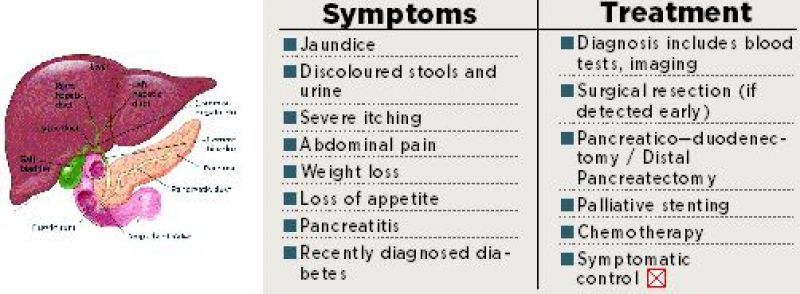Pancreatic cancer: Difficult to diagnose, tougher to cure, stay alert
The first step in evaluation is usually a CT scan to gauge if the cancer is potentially curable.

Pancreatic cancer, which claimed the life of former Goa Chief Minister Manohar Parrikar earlier this week, is one of the most dreaded forms of the disease because of its high mortality rate. It is among the top 10 causes of cancer -deaths worldwide. The National Cancer Registry Program of the Indian Council of Medical Research (ICMR) documented more than 13000 new cases of pancreatic cancer in India in 2015. This is just the tip of the iceberg. The low survival rate is due partly to the advanced stage of diagnosis (less than 20% are in a potentially curable stage), and to the aggressive nature of the disease itself. The five-year survival rate is said to be less than 5%; pancreatic cancer a leading cause of cancer death.
Symptoms:
The cancer grows insidiously and initially does not cause symptoms. Most are imprecise, leading delayed diagnosis. An early symptom could be jaundice which steadily deteriorates. Stools may be pale-coloured and urine dark. There may be severe itching. Other symptoms are non-specific vague abdominal pain, unexplained weight loss, loss of appetite. Some patients may have episodes of pancreatitis or recently diagnosed diabetes.
Diagnosis & Treatment:
The first step in evaluation is usually a CT scan to gauge if the cancer is potentially curable. It may include blood tests, other imaging, and assessments of the patient’s fitness and ability to be treated. If detected early, pancreatic cancer can be cured by surgical resection, but early detection is more of an exception than rule.

The ideal treatment of a patient with pancreatic cancer is by a multidisciplinary care team which includes a cancer surgeon, medical oncologist and pathologist, among others. The mainstay of curative treatment for pancreatic cancer is surgery which removes the cancer completely. This involves a complex procedure (Pancreaticoduodenectomy / Distal Pancreatectomy) and should be performed in well-equipped centers comprising a highly experienced surgical team. Non-curative options include palliative stenting, chemotherapy, pain relief, and other treatments directed at symptom control with an aim to improve quality of life.
Precautions & Prevention:
There is no definite way to prevent pancreatic cancer because risk factors such as age, gender, race, and family history cannot be controlled. This disease can affect anybody but can be prevented to a certain extent by avoiding smoking, alcohol and maintaining normal body weight, having a healthy balanced diet and active lifestyle.
(The writer Senior Consultant and Chief of Surgical Oncology, Vikram Hospital)

